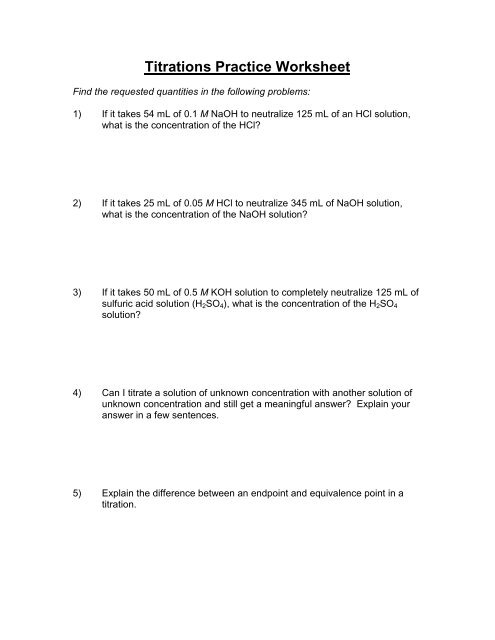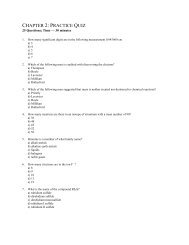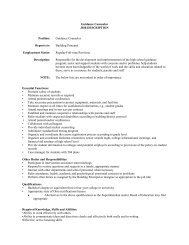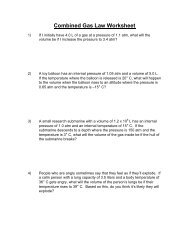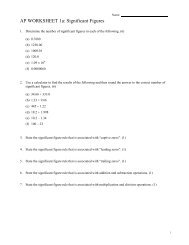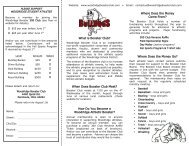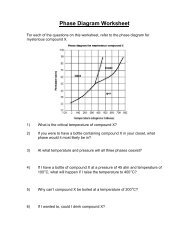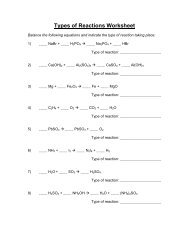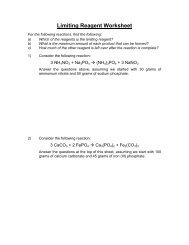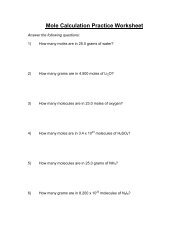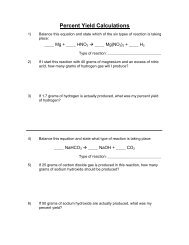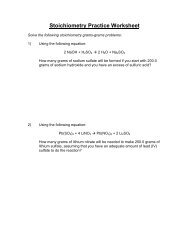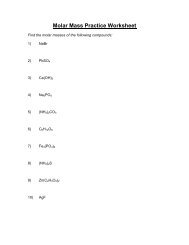Titrations Practice Worksheet
Titrations Practice Worksheet
Titrations Practice Worksheet
Create successful ePaper yourself
Turn your PDF publications into a flip-book with our unique Google optimized e-Paper software.
<strong>Titrations</strong> <strong>Practice</strong> <strong>Worksheet</strong><br />
Find the requested quantities in the following problems:<br />
1) If it takes 54 mL of 0.1 M NaOH to neutralize 125 mL of an HCl solution,<br />
what is the concentration of the HCl?<br />
2) If it takes 25 mL of 0.05 M HCl to neutralize 345 mL of NaOH solution,<br />
what is the concentration of the NaOH solution?<br />
3) If it takes 50 mL of 0.5 M KOH solution to completely neutralize 125 mL of<br />
sulfuric acid solution (H 2 SO 4 ), what is the concentration of the H 2 SO 4<br />
solution?<br />
4) Can I titrate a solution of unknown concentration with another solution of<br />
unknown concentration and still get a meaningful answer? Explain your<br />
answer in a few sentences.<br />
5) Explain the difference between an endpoint and equivalence point in a<br />
titration.
Solutions to the <strong>Titrations</strong> <strong>Practice</strong> <strong>Worksheet</strong><br />
For questions 1 and 2, the units for your final answer should be “M”, or<br />
“molar”, because you’re trying to find the molarity of the acid or base<br />
solution. To solve these problems, use M 1 V 1 = M 2 V 2 .<br />
1) 0.043 M HCl<br />
2) 0.0036 M NaOH<br />
For problem 3, you need to divide your final answer by two, because H 2 SO 4<br />
is a diprotic acid, meaning that there are two acidic hydrogens that need to<br />
be neutralized during the titration. As a result, it takes twice as much base<br />
to neutralize it, making the concentration of the acid appear twice as large<br />
as it really is.<br />
3) 0.1 M H 2 SO 4<br />
4) You cannot do a titration without knowing the molarity of at least one<br />
of the substances, because you’d then be solving one equation with two<br />
unknowns (the unknowns being M 1 and M 2 ).<br />
5) Endpoint: When you actually stop doing the titration (usually, this is<br />
determined by a color change in an indicator or an indication of pH=7.0 on<br />
an electronic pH probe)<br />
Equivalence point: When the solution is exactly neutralized. It’s<br />
important to keep in mind that the equivalence point and the endpoint are<br />
not exactly the same because indicators don’t change color at exactly<br />
7.0000 pH and pH probes aren’t infinitely accurate. Generally, you can<br />
measure the effectiveness of a titration by the closeness of the endpoint to<br />
the equivalence point.


